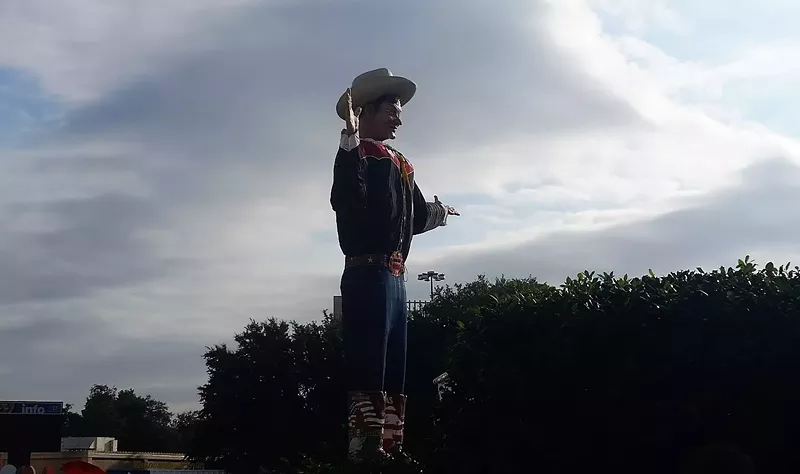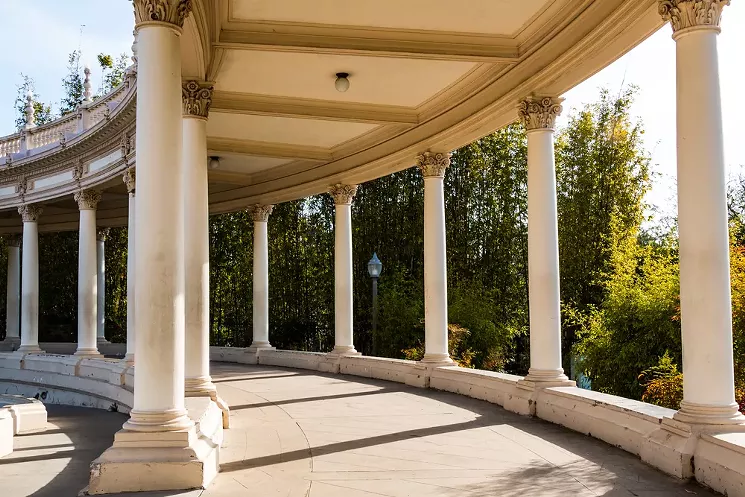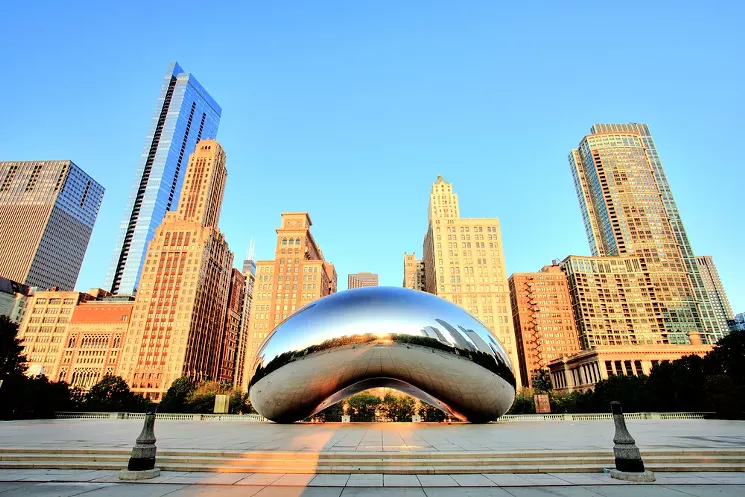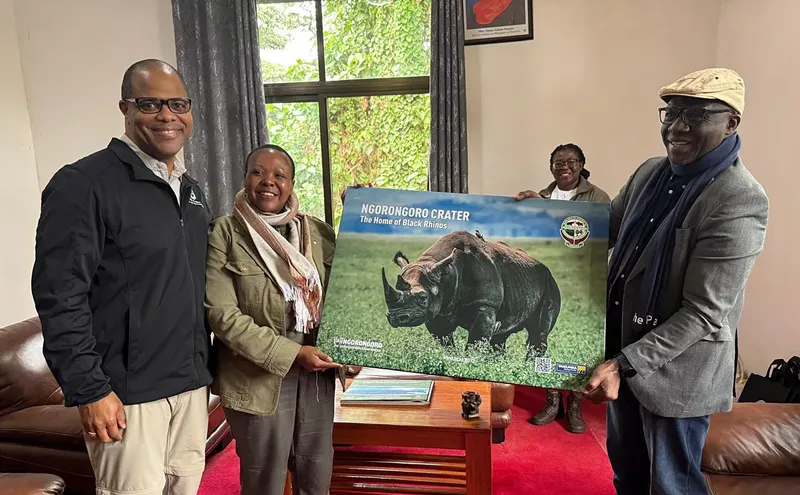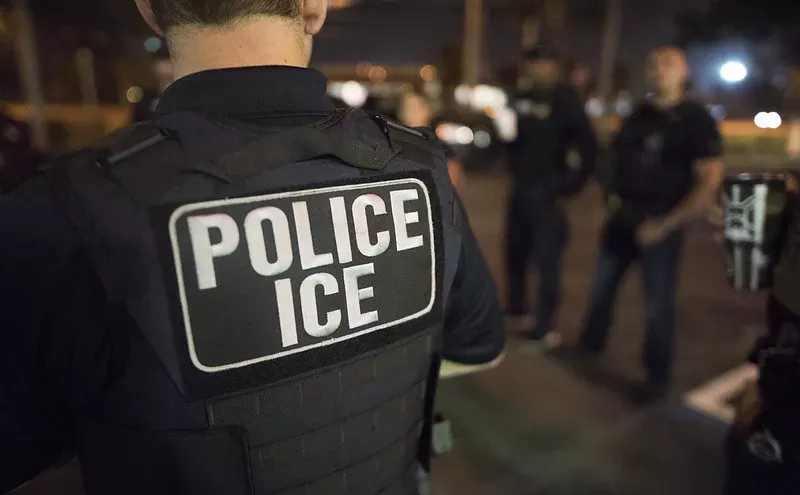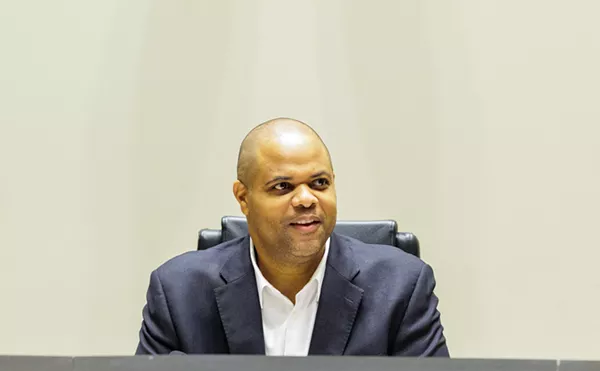Fair Park is the beleaguered 277-acre exposition park in a black neighborhood in South Dallas where the State Fair of Texas takes place every fall. The report takes a sharp scalpel to the state fair, exposing a sordid history and arguing that the fair continues to operate as a kind of social cancer in the corpus of the city. But the explanation is the thing. That’s what will get us, eventually, to the happy ending that I have promised.
The report, called “A Great Park for a Great City,” published by the nonprofit group Foundation for Community Empowerment, doesn’t dredge through this painful history as an abstract intellectual exercise. The argument it makes is that we will flub the great opportunity offered us if we fail to figure out how Fair Park came to be what it is today — a sad, down-at-the-heels, barricaded encampment with a caustic effect on the community around it.
This tale is usually told so that the decay of a once-thriving, mixed-income neighborhood around Fair Park — where black people were landlords as well as tenants, business owners as well as employees — is made to look like the slow, irresistible work of time. It's supposed to convey that the decay was the fault of the people who lived there. And I think I mentioned already that by the 1960s most of those people were black.
Telling the true story with clinical precision, the FCE report exposes what really happened. In the 1960s, the State Fair of Texas looked at market research showing that many white fairgoers were frightened by seeing black people on their way into the fair. The FCE report quotes a solution to the problem recommended to the fair in 1966 by a hired consultant:
“The solution for all of these conflicts,” the consultant suggests, “at least in terms of Fair Park’s location, is simple. All that is required is to eliminate the problem from sight. If the poor Negroes in their shacks cannot be seen, all the guilt feeling revealed above will disappear, or at least be removed from primary consideration.”
The report concludes: “This question was posed: ‘If all the land around Fair Park were bought up and turned into paved, lighted, fenced parking lot, would that solve the problem?’ The citizens of Dallas answered with a resounding, ‘Yes!’”
Immediately after that recommendation, Dallas Mayor Erik Jonsson launched a campaign of property seizure, using the city’s power of eminent domain to root out and remove black owners whose property abutted Fair Park. The city replaced apartments, houses and small commercial buildings with a sea of parking lots behind high iron fences.
The FCE report cites this history as preamble for everything that has happened since and continues to take place in the area around Fair Park. From 1970 to 2013, the number of housing units in the whole city went up by 72 percent, but housing in the area around Fair Park went down by more than 50 percent.
Between 1999 and 2014, property values in the whole city increased four times faster than values near Fair Park. The area around Fair Park is pocked by bare lots where houses have been scraped. Just east of Fair Park in the Mill City neighborhood, a survey by Habitat for Humanity found 47 percent of the housing was substandard.
A point that the FCE report hammers home with particular force is that none of this was or is inevitable. None of it had to happen. None of this depressing process has to continue to take place today.
The report cites spectacular successes in equally challenging circumstances in other American cities where urban parks have had the opposite effect on their surroundings: Millennium Park in Chicago, Balboa Park in San Diego, the High Line in Manhattan, Forest Park in St. Louis, Crissy Field in San Francisco, Seattle Center. The pattern and the rule of the thumb for reimagined American urban parks elsewhere has been that they spark the reimagining and the renewal of the areas around them.
The FCE report cites what has become a standard principle of urban real estate in most places, that parks are supposed to exert an upward “park effect,” or premium on land values around them. But Fair Park does exactly the opposite. The closer a property is to Fair Park’s bleak sea of empty asphalt, the less the land is worth.
And why would that continue to be true today? No matter how vile the park’s racial past may have been, is it really credible that the surrounding area continues to languish merely as some decades-long fallout or after-effect of things that happened a half-century ago?
No, of course not. And that’s not at all what the FCE report suggests. It’s way more disturbing than that. Forget about after-effects, in fact. What this report says — and spells out with facts — is that the willful degradation of South Dallas goes on today at an unslackened pace. And that particular burden of sin the report lays squarely at the feet of the State Fair of Texas.
The fair, still tightly controlled by the same kind of people who sat on its board 50 years ago, has used its power over a complaisant city bureaucracy to milk Fair Park for hundreds of millions of dollars while allowing the park itself to crumble into a deplorable condition. The report lays out instances in which the city’s park board, made up of kissing cousins to the fair board, allowed the fair to simply walk on its obligations.
As the report also describes, the decades of nonfeasance and misfeasance by parties on all sides at Fair Park have produced the empty hulk we see today, pitiful and absurd at the same time, like a beloved but terminally lame elephant we know we need to shoot.
So, the happy ending. The FCE report argues that Fair Park, properly reimagined and responsibly embraced, can be the great engine that powers a renaissance in South Dallas and a new day for the entire city. Maybe. Depending.
Remember that the first impulse of the mayor last year, undoubtedly nudged by the fair board, was to privatize Fair Park by handing it off to a friend of his, Walt Humann, who is also a great friend of the fair. When that process was challenged as illegal, the mayor was forced to open it up to competitive bidding.
I believe the sudden need to privatize Fair Park was spurred by the fair’s recognition that times are changing in the city, that it can no longer depend indefinitely on a weak park board and weaker city staff to do its bidding, and that it needs some kind of fortresslike structure to protect it from a meddling public, even though it sits on public property and soaks up tens of millions of dollars in public subsidy, as the FCE report also reveals.
A reason for my suspicion about the mayor’s plan for Fair Park is that the same process seems to be underway with another vast urban park, the new one the city is supposed to build along the Trinity River. There, also, the mayor is leading a crusade to create a new private entity to shield the Trinity River park from politics.
What politics? Whose politics? The social element crowding around the proposed local government corporation that the mayor wants to create for the river park is the same social element that sits on the fair board. What is its track record?
The FCE report on Fair Park depicts in painful detail the track record there — decades of racism, deliberate oppression and, surprise, surprise, terrible decay and social dysfunction. And I can tell you exactly what the same folks have achieved along the Trinity River in much the same period of time — decades of duplicity, a waste of public dollars, probably now in the billions, and a track record of laughable thickheadedness where recreation and natural resources are concerned.
The same people on the City Council who stopped the handoff of Fair Park to Walt Humann are the ones raising questions about the Trinity River park entity. Their track record is unblemished. They have never lied. They have never been wrong. They are not racists. They have the future of the city in their hearts.
The FCE report on Fair Park is well written and concise. It’s an intelligent, clear statement of what is at stake not only at Fair Park but in the destiny of the whole city. It’s tough reading. But in the end, the sun will come shining through the clouds ... maybe.
A Great Park for a Great City_Final by Schutze on Scribd

